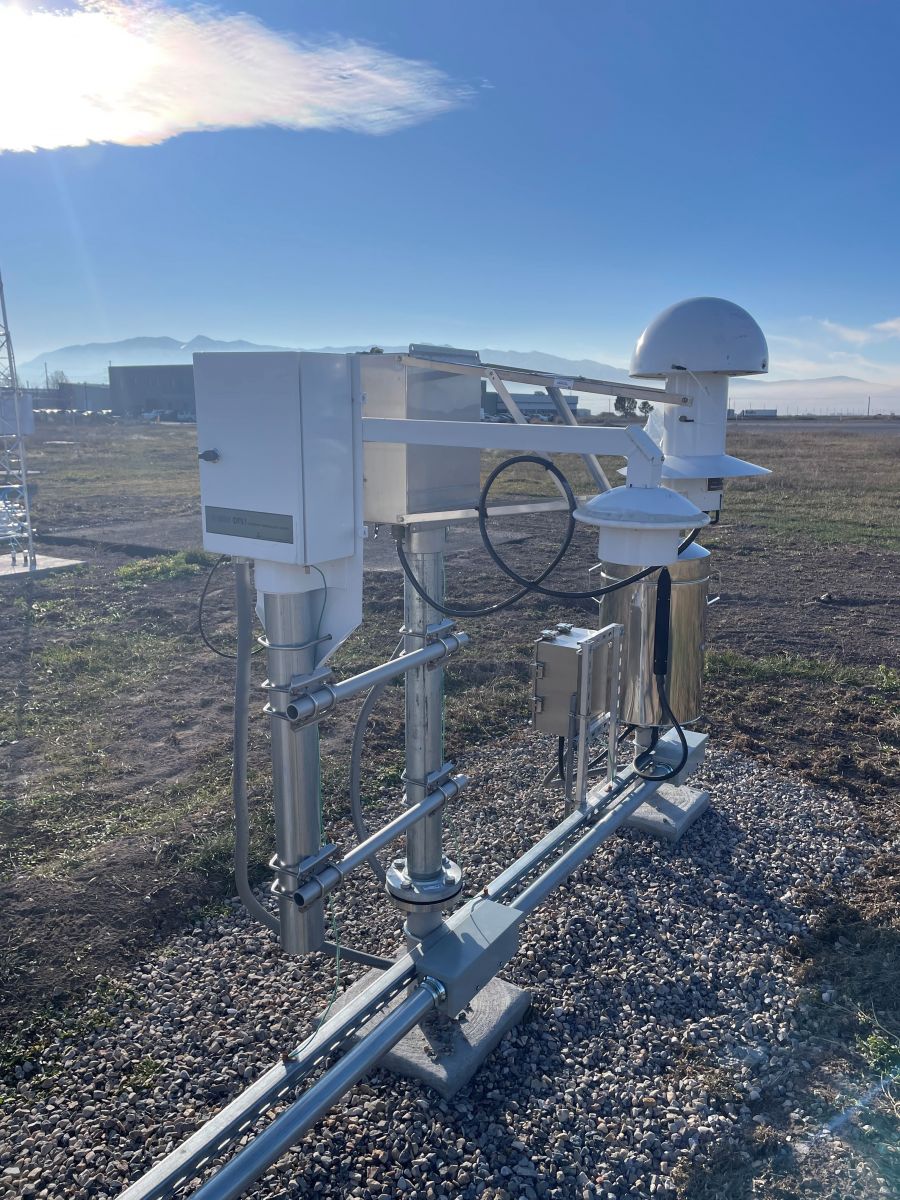
To determine dew point temperature, a mirror is cooled by a thermoelectric or Peltier cooler until dew or frost begins to condense on the mirror surface. The body of the mirror contains a platinum wire RTD, similar to that used for ambient temperature. This RTD assumes the mirror's temperature, which is held at the dew point temperature. When this condition occurs, the mirror's surface is in vapor pressure equilibrium with the surrounding air (i.e., has reached the saturation vapor pressure). The temperature required to maintain this equilibrium is, by definition, the dew point temperature. Optical techniques are used to detect the presence of surface condensation. Within the hygro thermometer, a beam of light from a small Light Emitting Diode (LED) is directed at the surface of the mirror at a 45-degree angle. Two photo-resistors are mounted to receive the reflected light. The "direct" sensor is placed at the reflection angle and receives a high degree of light when the mirror is clear. The indirect sensor is placed to receive light scattered when the mirror is clouded with visible condensation, (i.e., dew or frost formation). In normal operation, a feedback loop controls an electric heat pump running through a cooling-heating cycle, which cools the mirror until dew or frost is formed; it then heats the mirror until the condensate (dew or frost) is evaporated or sublimed. This cycle nominally takes about 1 minute to complete.
As the mirror's cloudiness increases, the "direct" sensor receives less light and the "indirect" sensor receives more light. When the ratio of indirect to direct light reaches an adaptive criterion value, the mirror is considered to be at the dew point temperature. The adaptive criterion value (ratio of indirect to direct light) is adjusted once a day to compensate for residual contamination on the mirror due to dust and other airborne particulates. Since a clean mirror needs relatively less indirect light to determine when dew has formed than a dirty mirror, the mirror is heated once a day to recalibrate the reference reflection expected from a dry mirror. This procedure compensates for a possible dirty or contaminated mirror and redefines adaptive criterion value used to determine when dew or frost has occurred. This once per day recalibration nominally takes about 15 minutes. The ASOS hygro thermometer meets all NWS specifications for measuring range, accuracy, and resolution. The specifications for accuracy are given in Root Mean Square Error (RMSE) and Maximum (MAX) Error. The RMSE for Dew Point Temperature is given as a range of values and is dependent on the Ambient Temperature minus the Dew Point Temperature value (i.e., Dew Point Depression [DD]). The low end of the RMSE and MAX Error range is for a DD of 0°F; the high end of the Error range is for a DD of 63°F.
Both the manual and automated temperature sensors directly measure the ambient dry-bulb and the dew point temperatures. The hygro thermometer used in the ASOS is a modern version of the fully automated "HO-83" hygro thermometer, first used operationally in 1985. This instrument uses a platinum wire Resistive Temperature Device (RTD) to measure ambient temperature and a chilled mirror to determine dew point temperature.
The RTD operates on the principle that electric resistance in a wire varies with temperature. This RTD is located in the stream of aspirated air entering the sensing unit and assumes the ambient air temperature.
The ASOS program will deploy replacement Temperature and Dew Point sensors at all ASOS sites throughout 2025 with Vaisala HMP 155E probes. Current sensors, the DTS-1 and HO-83/1088, are over 20 years old. The DTS-1 is unsupported since 31 August 2020, and the HO-83/1088 is costly to maintain with reliability issues.
| Back to Sensor Suite Design |